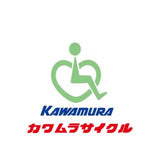![[5-7 December 2025] MyWellFair](http://ielder.asia/cdn/shop/articles/Dr_Kong_speak_at_My_Well_Fair_78ce7f05-0960-4094-b18c-6759d56a7dde_700x700_crop_center.jpg?v=1765359580)
[5-7 December 2025] MyWellFair
The iElder Team From 5–7 December 2025, the LaLaport BBCC Rooftop Garden blossomed into a lively oasis of health, joy, and community as MyWellFair 2025 welcomed visitors to a three-day celebration of holistic wellness. As one of the participating exhibitors, iElder...




![[22 Jan 2026] Talks on Integrative Medicine and Home Improvement Tips](http://ielder.asia/cdn/shop/articles/afternoon_tea_with_AIM_Healthcare_f5300f6f-35d1-496a-ac5a-1d7f3cf80953_700x700_crop_center.jpg?v=1764334538)
![[8 January 2026] Managing Chronic Diseases with Integrative Medicine: A Collaborative Approach (Invitation to Healthcare Professional)](http://ielder.asia/cdn/shop/articles/afternoon_tea_with_AIM_Healthcare_c57790d2-8d2c-46d8-8a6f-51607e217ef2_700x700_crop_center.jpg?v=1764334504)





Leave a comment